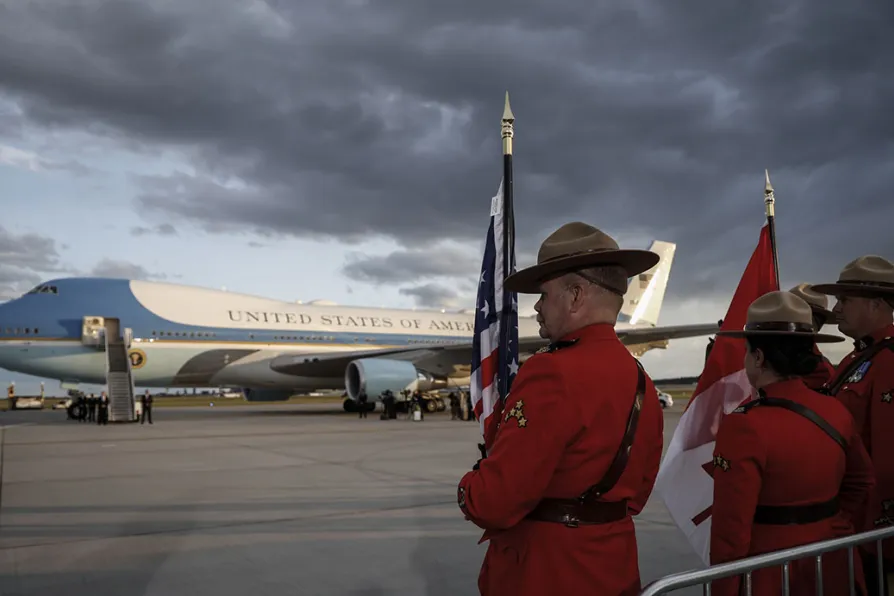
 RCMP Mounties wait in front of Air Force One as President Donald Trump arrives in Calgary, Alberta, June 15, 2025, to attend the G7 Leaders meeting taking place in Kananaskis, Alberta. Photo: Jeff McIntosh/The Canadian Press via AP
RCMP Mounties wait in front of Air Force One as President Donald Trump arrives in Calgary, Alberta, June 15, 2025, to attend the G7 Leaders meeting taking place in Kananaskis, Alberta. Photo: Jeff McIntosh/The Canadian Press via AP
LEADERS of some of the world’s biggest economies arrived in the Canadian Rockies on Sunday for a Group of Seven (G7) summit.
The summit is likely to be dominated by the escalating conflict between Israel and Iran and the trade war sparked by US President Donald Trump.
Summit host Canadian Prime Minister Mark Carney has decided to abandon the usual practice of issuing a joint statement at the end of the meeting.
With other leaders wanting to talk to President Trump in an effort to talk him out of imposing tariffs, the summit risks being a series of bilateral conversations rather than a show of unity.
The leaders of India, Ukraine, Brazil, South Africa, South Korea, Australia, Mexico and the UAE are among other world leaders invited to join the summit.
Asked on Sunday if he planned to announce any trade agreements at the G7, President Trump said: “We have our trade deals. All we have to do is send a letter: ‘This is what you’re going to have to pay.’ But I think we’ll have a few, few new trade deals.”
Bilateral meetings with the US president can be fraught as Mr Trump has used them to try to intimidate the leaders of Ukraine and South Africa.
Former Canadian prime minister Jean Chretien told a panel this week that President Trump “tends to be a bully.”
He added that if Mr Trump does play up, leaders should ignore him and remain calm.
The war in Ukraine will be on the agenda. President Volodymyr Zelensky is due to attend the summit and is likely to plead with the US president for increased support for his war against Russia’s invasion.
German officials were keen to counter the suggestion that the summit would be a “six against one” event, noting that the G7 countries have plenty of differences of emphasis among themselves on various issues.














